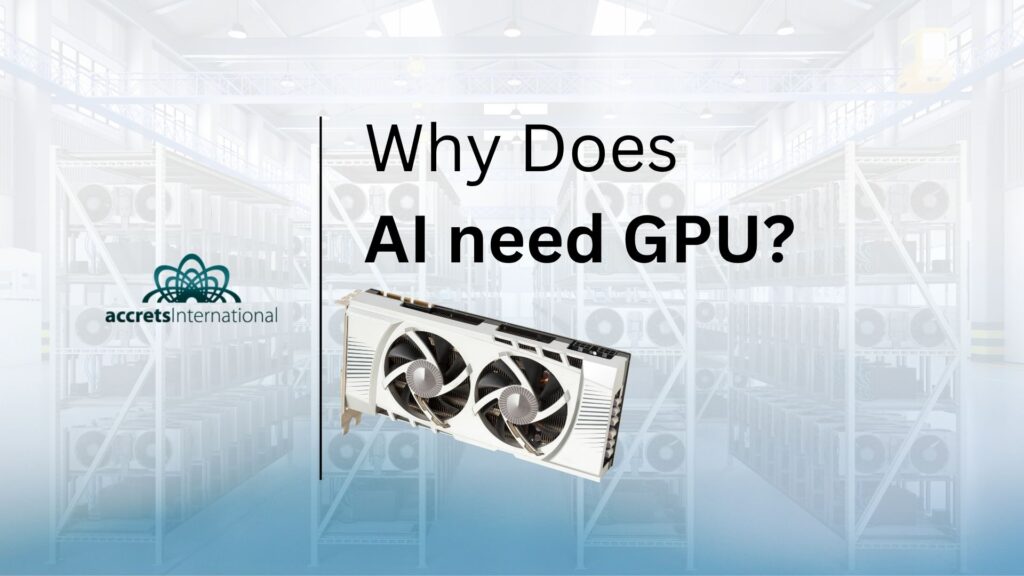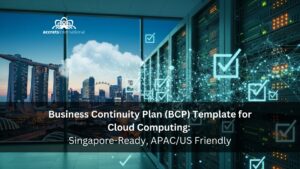Understanding why AI needs GPUs instead of CPUs is crucial for modern businesses investing in AI infrastructure. While CPUs are designed for general-purpose tasks, GPUs are engineered to handle massive parallel workloads, making them ideal for the demands of deep learning and AI training. In this article, we’ll explore this topic from both a technical and strategic business lens. Whether you’re managing IT infrastructure or scaling AI models in the cloud, read on—let’s explore the full picture together.
Table of Contents
ToggleIntroduction: Decoding GPUs in the Age of AI
Artificial Intelligence (AI) has evolved from a futuristic concept to a cornerstone of enterprise innovation, significantly reshaping industries ranging from finance to healthcare. However, powering sophisticated AI workloads isn’t possible with traditional computing solutions alone. GPUs—Graphics Processing Units—have become essential components driving AI’s transformative capabilities. But why exactly does AI depend so heavily on GPUs? And how does this impact enterprises moving toward cloud-based infrastructure?
This article takes an authoritative yet conversational journey into GPU technology, unraveling its significance in AI infrastructure, especially for enterprises operating within Singapore and Southeast Asia.
GPU Basics: What Are GPUs and How Do They Differ from CPUs?
At its core, a GPU is a specialized processor originally designed to accelerate graphics rendering. Unlike CPUs (Central Processing Units), which handle serial computing tasks efficiently, GPUs excel at parallel processing—performing thousands of simultaneous operations. This capability makes GPUs particularly suited for handling computationally intensive workloads such as those involved in AI.
To put this simply, imagine solving one mathematical problem at a time versus solving thousands simultaneously. CPUs are the single-tasking experts, whereas GPUs are the multitasking maestros of computing.
AI Workloads and the GPU Advantage
Modern AI workloads require immense computational power. Tasks like deep learning, large-scale data analytics, and real-time inference demand extensive parallel computations, which GPUs handle effortlessly. Enterprises increasingly prefer GPU-powered infrastructure for faster model training, iterative experimentation, and real-time data analysis.
Organizations in the region, such as those in finance, healthcare, and e-commerce, find GPU-as-a-Service particularly advantageous. It provides flexibility and efficient resource management without heavy upfront costs. For instance, companies utilizing GPU as a Service solutions experience substantial improvement in scalability, speed, and cost-effectiveness.
Why Enterprises Require GPUs in Cloud AI Infrastructure
Businesses looking to leverage AI for competitive advantage find cloud GPU infrastructure essential. GPUs in cloud environments offer significant benefits, including effortless scalability, reduced time-to-market, and significant cost savings on hardware investments.
Southeast Asian enterprises benefit from cloud GPU infrastructure, as it enables agile innovation without being constrained by traditional IT infrastructure limitations. Enterprises are increasingly realizing the future of cloud computing hinges on incorporating GPU technology to stay ahead.
Enterprise GPU Infrastructure: On-Premise vs Cloud
Enterprises exploring GPU infrastructure face a critical decision: should GPU workloads be hosted on-premise or in the cloud?
On-premise GPU deployments offer maximum control and security, ideal for sensitive data and compliance-heavy industries. However, they often entail significant upfront investment and complexity in management.
Cloud GPU infrastructure, meanwhile, provides flexibility and scalability, making it ideal for rapidly evolving AI applications. Cloud solutions, especially those leveraging platforms like OpenStack, have emerged as strategic alternatives. Enterprises migrating from VMware to OpenStack have leveraged guidance from resources such as Understanding OpenStack Architecture and selecting the Better Server OS for OpenStack.
Essential Considerations for GPU-Enabled Cloud Infrastructure
When adopting GPU cloud infrastructure, enterprises must address critical considerations including cost optimization, performance monitoring, security, and compliance.
Given the heightened regulatory environment in Southeast Asia—particularly with data sovereignty concerns such as Singapore’s PDPA compliance—security becomes paramount. Enterprises often consult expert insights into security considerations when migrating from VMware to OpenStack and emphasize cybersecurity in their cloud migration strategies.
Real-world Case Studies & GPU Infrastructure Success Stories
To illustrate the tangible benefits of GPU integration, consider leading enterprises in Southeast Asia. Organizations migrating GPU-intensive workloads have seen improvements in efficiency, data analysis speed, and predictive accuracy, leading to accelerated innovation and significant cost savings.
For example, enterprises successfully transitioning from VMware have been documented in several insightful success stories, highlighting practical challenges, solutions, and measurable outcomes in GPU-powered infrastructure transitions.
How to Prepare Your Enterprise for GPU Integration
Adopting GPU infrastructure requires strategic planning and expert consultation. The initial steps involve understanding your organization’s specific AI workload requirements, infrastructure readiness assessment, budget forecasting, and cloud provider selection.
Further, businesses navigating these complexities have leveraged external partnerships by carefully choosing the right IT outsourcing provider, and proactively addressing the inherent challenges of cloud computing.
Join Us on July 25th: Unleashing Private AI with OpenStack and GPUs
On July 25th, Accrets invites you to an exclusive webinar, “Unleashing Private AI: Harnessing GPUs with OpenStack for Maximum Efficiency.” This live session will dive deep into how enterprises can deploy GPU-powered AI infrastructure using OpenStack, offering insights into performance optimization, private cloud architecture, and real-world case studies.
Whether you’re evaluating GPU strategy or scaling your current AI workloads, this is a must-attend for IT leaders, infrastructure architects, and innovation teams across Southeast Asia. Reserve your seat now and take the first step toward building a secure, efficient, and future-ready AI environment.

Conclusion: Taking the Next Step with Expert Guidance
In summary, GPUs are no longer merely beneficial—they are essential to unlocking AI’s full potential for enterprises. From accelerating complex computations to driving cost efficiency and innovation in cloud infrastructure, GPUs are at the heart of AI-driven transformations.
Taking your AI and GPU journey further requires expert guidance. For personalized consultation on integrating GPUs into your enterprise infrastructure, contact Accrets GPU expert for a free consultation.
Additionally, we invite you to join Accrets’ free webinar, Unleashing Private AI: Harnessing GPUs with OpenStack for Maximum Efficiency, to gain practical insights and actionable strategies.
Dandy Pradana is an Digital Marketer and tech enthusiast focused on driving digital growth through smart infrastructure and automation. Aligned with Accrets’ mission, he bridges marketing strategy and cloud technology to help businesses scale securely and efficiently.




